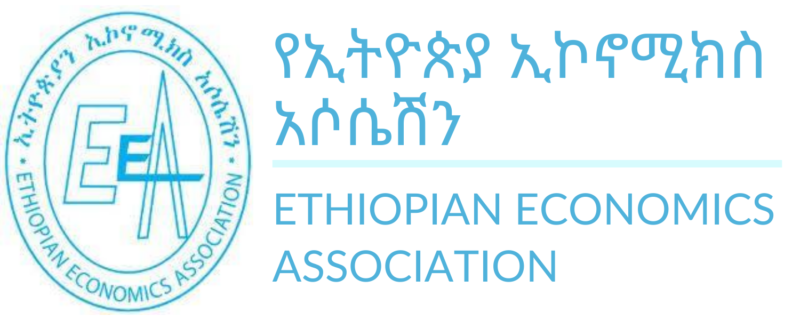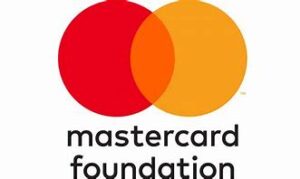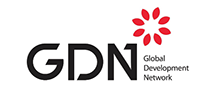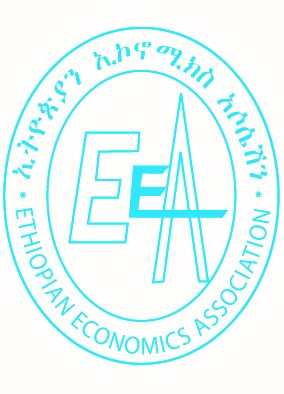EEA’s Institutional Profile
The Ethiopian Economics Association (EEA) is a non-profit, non-partisan, and independent research and membership organization, established under the Ethiopian law in 1992. Since its formation EEA has strived to: a) provide its members a platform of network, experiential learning, and access to current information; b) generate evidence-based analysis on an evolving social, economic and environment realities of Ethiopia so that policymakers, practitioners, business community, researchers, development partners and the general public are informed; c) contribute to frontier and emergent economic thinking relevant to the Ethiopian context and to advanced research methodologies, academic rigor, and development processes.
Vision: EEA aspires to become a premier professional association serving as a center of excellence regionally and internationally for providing unconstrained and evidence-based economic policy research and analysis.
Mission: To provide a platform for networking, information and learning; to inform and influence evidence-based policymaking; to offer prioritized training; and to contribute to the advancement of the discipline of economics.
Project Profile
- Project title:Economic Policy Enabling Environment
- Funding organization:Bureau of Finance and Economic Development (BoFED) of Afar Regional State
- Duration of the project:105 days
- Research team:
- Degye Goshu, Principal instigator
- Mengistu Ketema, Co-investigator
- Semeneh Bessie, Senior researcher
- Aemro Tazeze, Researcher
- Dawit Teshale, Assistant Researcher
Project Objectives
The general objective of this study is, therefore, to assess major achievements and gaps in socioeconomic development endeavors and to identify development priority areas for future strategic plan and policy interventions. Specific objectives of the study are to:
- evaluate the resource base and livelihood capabilities, assets and activities and living conditions in the region for possible design and implementation of homegrown economic reform in the region;
- construct asset indices and identify priority livelihood assets and asset indicators required to estimate resource base and asset accumulation;
- establish sustainable and resilient livelihood strategies for durable socioeconomic growth by integrating the four pillars of development (economic, social, institutional and environmental) and providing a clear perspective of conducting sustainable livelihood analysis in the region;
- identify factors limiting the adaptation of sustainable livelihood strategies and outcomes/ achievements and to recognize the factors that reduce vulnerability of the target population by aligning the resource base, policy focus, and sustainable livelihoods deemed relevant to design appropriate policy interventions;
- assess and measure the multidimensional welfare situation in the region; and
- offer training on ‘Applied Livelihood and Welfare analysis with DASP’ to improve the data management, analysis, and reporting capacity of key personnel in the region.
Expected Outcomes and Outputs
This study is intended to generate new and relevant empirical evidence on the socioeconomic development and resource potentials, priorities, trends, achievements, and gaps in the region. It is particularly expected to have the following outputs:
- The resource base and livelihood assets of the region have been evaluated for their relative role in the establishment of sustainable and resilient livelihoods;
- Asset indices are constructed and priority assets required for durable socioeconomic growth have been identified;
- Optimal mix of livelihoods and livelihood strategies have been established for possible policy intervention points;
- A multidimensional framework of welfare analysis has been designed and adapted to the regional context for measuring welfare situation in the region at different levels and for different social groups;
- Various multidimensional welfare measures (monetary and non-monetary) have been estimated to identify the prevalence, intensity, and distribution of poverty and inequality in the region;
- Access to and achievements in education have been measured and its distribution, prevalence, and intensity by population subgroups estimated;
- Access to and achievements in health and food security have been measured and their distribution, prevalence, and intensity by population subgroups estimated;
- Access to basic services including safe drinking water, electricity, telephone, clean and secure housing, and standard source of energy for cooking and lighting have been measured and their distribution, prevalence, and intensity by population subgroups estimated;
- Achievements in improving economic (income/expenditure) wellbeing have been measured and its distribution, prevalence, and intensity by population subgroups estimated;
- The resource base, policy focus, and sustainable livelihoods have been aligned for designing relevant development policy interventions;
- The four pillars of development (economic, social, institutional and environmental) have been integrated and clear perspective of conducting sustainable livelihood analysis in the region is provided;
- Factors limiting the adaptation of sustainable livelihood strategies and outcomes/achievements have been identified:
- The factors that reduce vulnerability of the target population have been recognized; and
- Other relevant and latest empirical evidence deemed relevant to designing socioeconomic development policies in the region have been generated, organized and documented.






